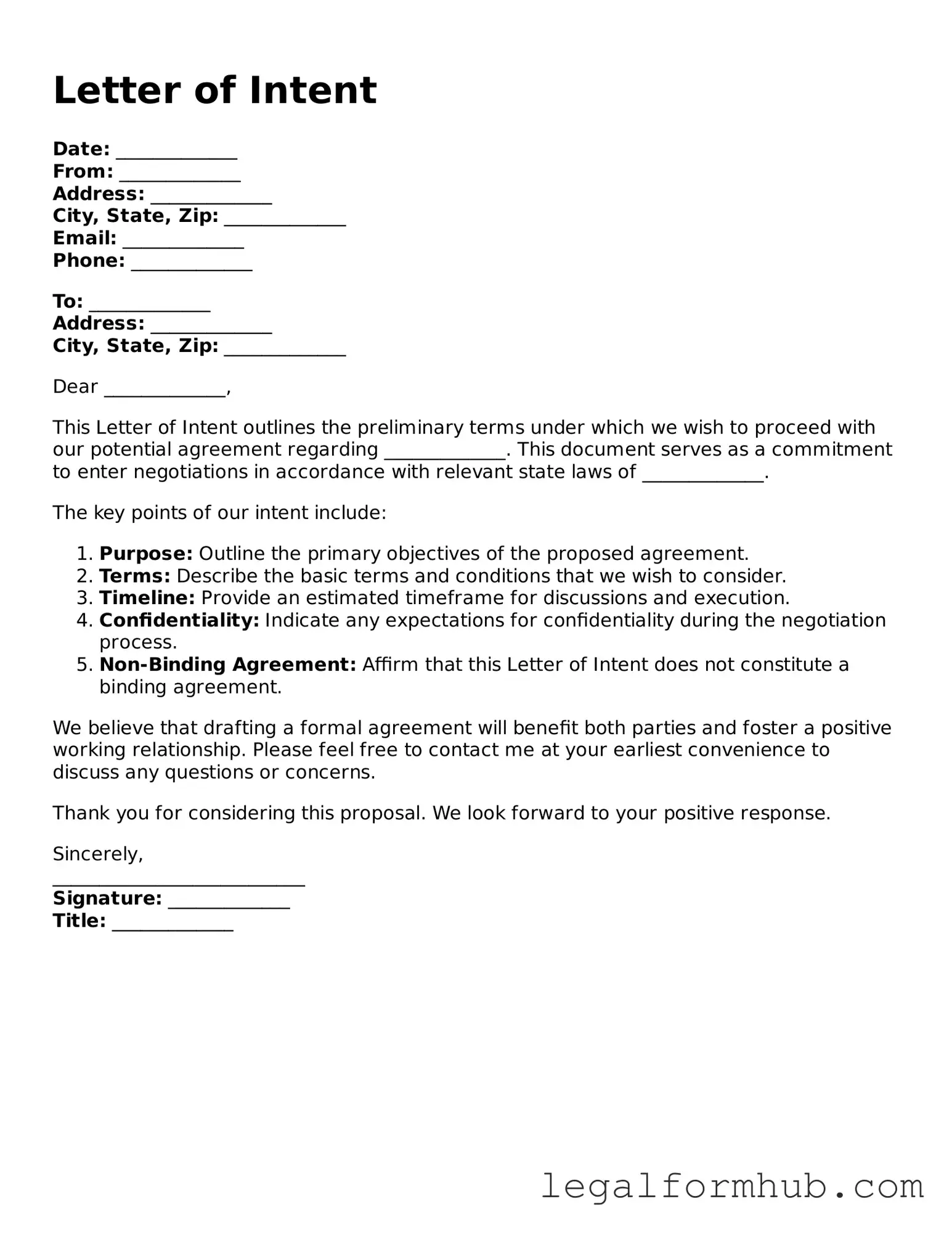A Memorandum of Understanding (MOU) serves a similar purpose to a Letter of Intent. Both documents outline the intentions of parties to engage in a business relationship or project. An MOU is often less formal than a contract but still signifies a commitment to proceed with negotiations. It may detail the roles and responsibilities of each party, providing a framework for future agreements. While not legally binding, an MOU can create a sense of accountability and clarity between the parties involved.
A Term Sheet is another document that shares similarities with a Letter of Intent. It summarizes the key terms and conditions of a proposed deal, typically in a concise format. Term Sheets are commonly used in finance and investment contexts. They outline the main points of agreement, such as price, payment terms, and timelines. Like a Letter of Intent, a Term Sheet serves as a starting point for drafting a more detailed contract.
An Offer Letter is akin to a Letter of Intent in employment scenarios. It communicates the employer’s intention to hire a candidate and outlines key details of the job offer, such as salary, benefits, and start date. While it expresses a clear intent to employ, it may also include contingencies, such as background checks. An Offer Letter is generally considered a preliminary step before a formal employment contract is finalized.
A Non-Binding Agreement is similar in that it expresses the intentions of the parties without creating enforceable obligations. This type of document may be used in various contexts, such as negotiations or collaborations. It allows parties to outline their expectations and objectives while maintaining flexibility. Like a Letter of Intent, a Non-Binding Agreement can help facilitate discussions and clarify intentions without the pressure of legal commitments.
When completing the hiring process, employers often require applicants to provide various essential documents, including the Employment Application PDF form, which serves to gather necessary information about an individual's background. This document streamlines the onboarding process by collecting personal details, work history, and educational qualifications. To facilitate this, you can Fill PDF Forms that meet the employers' specifications.
A Collaboration Agreement can also resemble a Letter of Intent, particularly in contexts where two or more parties intend to work together on a project. This document outlines the purpose of the collaboration, the contributions of each party, and the expected outcomes. While it may include terms that guide the partnership, it is often less formal than a contract. A Collaboration Agreement can help set the stage for a successful working relationship.
A Purchase Agreement, while more formal, shares some foundational similarities with a Letter of Intent. Both documents express a commitment to a transaction, detailing the terms under which a buyer intends to acquire goods or services. A Purchase Agreement is legally binding and includes specific terms, conditions, and obligations for both parties. However, a Letter of Intent may precede a Purchase Agreement, signaling the intention to negotiate the details of the transaction.
Lastly, a Confidentiality Agreement, or Non-Disclosure Agreement (NDA), can be similar in its preliminary nature. While its primary focus is on protecting sensitive information, it often accompanies discussions that may lead to a Letter of Intent. By establishing confidentiality, parties can freely share information without fear of disclosure. This allows for open negotiations and discussions, paving the way for future agreements.
